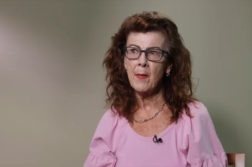NEW ORLEANS, La. (Ivanhoe Newswire) – Before we finish this story, three people in the United States will suffer a stroke. If it doesn’t kill you, it may cause severe disability. Now, new medical research is giving patients hope that the damage done by strokes doesn’t have to be permanent.
Twenty-five-year-old Quincy Taylor was experiencing severe headaches for a whole week, but chalked it up to stress, until the worse happened.
“It was the worst pain that I’ve experienced, so far, in my life,” he recalls.
Quincy was having a stroke.
Nicolas Bazan, MD, PhD at the LSU Health Neuroscience Center explains, “The blood flow to a specific area of the brain will diminish all a sudden due to a blockade of a key artery.”
The clot busting drug, TPA, was a game changer 30 years ago for treating ischemic strokes. It had to be administered within four hours of a stroke. The extend trial found TPA may be helpful up to 10 hours afterwards, and Dr. Bazan is working on ways to save brains up to eight and nine days after a stroke.
“Perhaps there are experimental treatments that we can try to protect that area and then be able to restore function of that area,” Dr. Bazan mentions.
By pinpointing which cells in the brain are involved in post-stroke response, Dr. Bazan believes neuro-protective molecules his team discovered could save brain cells. As for Quincy, quick treatment has him moving forward, taking recovery one step at a time.
Dr. Bazan believes that finding new ways to save brain cells will help patients recover faster, with less long-term disability.
Contributors to this news report include: Marsha Lewis, Producer; Matt Goldschmidt, Videographer; Sharon Dennis, Editor.
To receive a free weekly e-mail on medical breakthroughs from Ivanhoe, sign up at: http://www.ivanhoe.com/ftk
Source:
MEDICAL BREAKTHROUGHS
RESEARCH SUMMARY
TOPIC: SAVING BRAIN CELLS 8 TO 9 DAYS AFTER STROKE
REPORT: MB #5341
BACKGROUND: A stroke, also known as a cerebrovascular accident, is a medical emergency that occurs when blood flow to a part of the brain is disrupted, leading to damage or death of brain cells. Strokes can result in a range of physical and cognitive impairments and prompt medical attention is crucial for minimizing long-term consequences. There are two main types of strokes: ischemic and hemorrhagic. Ischemic strokes are the most common type, accounting for about 87% of all strokes. They occur when a blood clot or plaque obstructs an artery supplying blood to the brain. Hemorrhagic strokes occur when a blood vessel in the brain ruptures, leading to bleeding into the surrounding tissue. High blood pressure is a major risk factor for strokes along with tobacco, diabetes, age, gender, and family history.
(Source: https://www.mayoclinic.org/diseases-conditions/stroke/symptoms-causes/syc-20350113
DIAGNOSING: Diagnosing a stroke involves a rapid and accurate assessment to determine the type of stroke and the appropriate course of treatment. Early diagnosis is crucial for initiating timely interventions that can minimize the damage caused by a stroke. An emergency team will move quickly most often first with a CT scan to determine what kind of stroke you are experiencing. They will also need to rule out other possible causes the symptoms such as brain tumors and drug reactions. Other tests administered during a diagnostic period blood tests, MRIs, carotid ultrasounds, cerebral angiograms, and echocardiograms. To treat an ischemic stroke, doctors will need to restore blood flow to the brain. To treat a hemorrhagic stroke they will focus on controlling the bleeding and reducing pressure in the brain caused by excess fluids.
(Source: https://www.mayoclinic.org/diseases-conditions/stroke/diagnosis-treatment/drc-20350119
NEW TECHNOLOGY: New technology advancements are allowing the development of new muscle stimulators that can support people to improve both arm and leg functioning. This is usable for people with a large range of disabilities including stroke patient survivors. It is believed that this could help those who have suffered from stroke and symptoms to increase their mobility, meet upper limb rehabilitation goals, and increase physical activity.
FOR MORE INFORMATION ON THIS REPORT, PLEASE CONTACT:
Leslie Capo
If this story or any other Ivanhoe story has impacted your life or prompted you or someone you know to seek or change treatments, please let us know by contacting Marjorie Bekaert Thomas at mthomas@ivanhoe.com




